- Home
- Clive Cussler
Valhalla Rising
Valhalla Rising Read online
Valhalla Rising
By Clive Cussler
eBook created by: cdog
Into Oblivion
June 1035
Somewhere in North America
They moved through the morning mist like ghosts, silent and eerie in phantom ships. Tall, serpentine prows arched gracefully on bow and stern, crowned with intricately carved dragons, teeth bared menacingly in a growl as if their eyes were piercing the vapor in search of victims. Meant to incite fear into the crew's enemies, the dragons were also believed to be protection against the evil spirits that lived in the sea.
The little band of immigrants had come across a hostile sea in long, elegantly shaped black hulls that skimmed the waves with the ease and stability of trout in a peaceful brook. Long oars reached from holes in the hulls and dipped into the dark water, pulling the ships through the waves. Their square red-and-white striped sails hung limp in the listless air. Small lapstrake boats twenty feet long and carrying extra cargo were tied to the sterns and towed behind.
These people were the precursors of those who would come much later: men, women and children, along with their meager possessions, including livestock. Of the paths Norsemen had blazed across the oceans, none was more dangerous than the great voyage across the North Atlantic. Despite the perils of the unknown, they'd boldly sailed through the ice floes, struggled under the gale-force winds, fought monstrous waves and endured vicious storms that surged out of the southwest. Most had survived, but the sea had exacted its cost. Two of the eight ships that had set out from Norway were lost and never seen again.
Finally, the storm-worn colonists reached the west coast of Newfoundland, but instead of landing at L'Anse aux Meadows, the site of Leif Eriksson's earlier settlement, they were determined to explore farther south in the hope of finding a warmer climate for their new colony. After skirting a very large island, they steered a southwesterly course until they reached a long arm of land that curved northward from the mainland. Continuing around two lower islands, they sailed for another two days past a vast white sandy beach, a great source of wonder to people who had lived all their lives on unending coastlines of jagged rock.
Rounding the tip of the seemingly unending stretch of sand, they encountered a wide bay. Without hesitation, the little fleet of ships entered the calmer waters and sailed west, helped along by an incoming tide. A fog bank rolled over them, casting a damp blanket of moisture over the water. Later in the day, the sun became a dim orange ball as it began to set over an unseen western horizon. A conference was shouted among the commanders of the ships and it was agreed to anchor until morning, in hopes the fog would lift.
When first light came, the fog had been replaced with a light mist, and it could be seen that the bay narrowed into a fjord that flowed into the sea. Setting out the oars, the men rowed into the current as their women and children stared quietly at the high palisades that emerged from the dying mist on the west bank of the river, rising ominously above the masts of the ships. What seemed to them to be incredibly giant trees forested the rolling land behind the crest. Though they saw no sign of life, they suspected they were being watched by human eyes hidden among the trees. Every time they had come ashore for water, they had been harassed by the Skraelings, their term for any foreign-born natives that lived in the alien country they hoped to colonize. The Skraelings had not proven friendly, and on more than one occasion had unleashed clouds of arrows against the ships.
Keeping their usual warlike nature under firm control, the expedition leader, Bjarne Sigvatson, had not allowed his warriors to fight back. He knew well that other colonists from Vinland and Greenland had been plagued by the Skraelings, too, a situation caused by the Vikings who had murdered several of the innocent inhabitants purely out of a barbaric love of killing. This trip Sigvatson would demand that the native inhabitants be treated in a friendly manner. He felt it vital for the survival of the colony to trade cheap goods for furs and other necessities, without the bloodshed. And, unlike Thorfinn Karlsefni and Leif Eriksson, whose earlier expeditions were eventually driven off by the Skraelings, this one was armed to the teeth by men who were blood-hardened Norwegian veterans of many battles with their archenemies, the Saxons. Swords slung over their shoulders, one hand clutching a long spear, the other a huge axe, they were the finest fighting men of their time.
The incoming tide could be felt far up the river and helped the rowers make headway into the current, which was mild due to the low gradient. The river's mouth was only three-quarters of a mile wide, but it soon broadened to almost two miles. The land on the sloping shore to the east was green with lush vegetation.
Sigvatson, who was standing with his arm around the great dragon prow of the lead ship, gazing through the dying mist into the distance, pointed to a shadow in the steep rock palisades looming around a slight bend. "Pull toward the left bank," he ordered the rowers. "There looks to be an opening in the cliffs where we can shelter for the night."
As they drew closer, the dark, forbidding entrance of a flooded cavern grew in size until it broadened wide enough for a ship to enter. Sigvatson peered into the gloomy interior and saw that the passage traveled deep under the sheer walls of the cliff. He ordered the other ships to drift while the mast on his ship was unstepped and laid flat to permit entry beneath the low arch at the cavern's mouth. The fjord's stream swirled around the entrance, but the hardy rowers easily drove the ship inside, shipping the oars only slightly to keep them from striking the flanks of the opening.
As they passed through, the women and children leaned over the bulwarks and stared down through water of startling clarity, schools of fish clearly visible swimming over the rocky bottom nearly fifty feet below. It was with no little trepidation that they found themselves in a high-ceilinged grotto easily large enough to hold a fleet of ships three times the size of the little Viking fleet. Though their ancestors had embraced Christianity, old pagan traditions died hard. Naturally formed grottos were regarded as the dwelling places of the gods.
The walls on the interior of the grotto, formed by the cooling of molten rock 200,000 million years earlier, had been sculpted and worn smooth by the waves of an ancient sea against the volcanic rock layers that were an extension of nearby mountains. They arched upward into a domed ceiling that was bare of moss or hanging growth. Surprisingly, it was also free of bats. The chamber was mostly dry. The water level stopped at a ledge that ascended three feet and stretched into the inner reaches of the cavern for a distance of nearly two hundred feet.
Sigvatson shouted through the grotto entrance for the other ships to follow. Then his rowers eased off their strokes and let the ship drift until its stem post bumped lightly against the edge of the second cavern's floor. As the other ships approached the landing, long gangplanks were run out and everyone scurried onto dry land, happy to stretch their legs for the first time in days. The foremost matter of business was to serve the first hot meal they'd eaten since an earlier landing hundreds of miles to the north. The children spread out throughout the caverns to gather driftwood, running along the shelves that eons of water erosion had carved in the rock. Soon the women had fires going and were baking bread, while cooking porridge and fish stew in large iron pots. Some of the men began repairing the wear and tear on the ships from the rugged voyage, while others threw out nets and caught schools of fish teeming in the fjord. The women were only too happy to find such comfortable shelter from the elements. The men, on the other hand, were big, tousle-haired outdoorsmen and sailors who found it unpleasant to exist in rock-bound confinement.
After eating and just before settling in for the night in their leather sleeping bags, two of Sigvatson's young children, an eleven-year-old boy and ten-year-old girl, came running up to him, shouting excit
edly. They grabbed his big hands and began dragging him into the deepest part of the cavern. Lighting torches, they led him into a long tunnel barely large enough to stand in. It was a tube passage, a rounded cave system originally formed when underwater.
After climbing over and around fallen rock, they ascended upward for two hundred feet. Then the children stopped and motioned to a small crevice. "Father, look, look!" cried the girl. "There is a hole leading outside. You can see the stars."
Sigvatson saw that the hole was too small and narrow even for the children to crawl through, but he could clearly see the nighttime sky. The next day, he put several men to work smoothing the tunnel floor to ease access and widening the exit hole. When the opening was expended so a man could walk through while standing straight, they found themselves stepping into a large meadow bordered by stout trees. No barren, Greenland timberless land here. The supply of lumber to build houses was limitless. The ground was thick with wild-flowers and grass to graze their livestock. It was on this generous land high above the beautiful, blue fjord bountiful with fish that Sigvatson would build his colony. The gods had shown the way to the children, who led the grown-ups to what they all hoped was their newly found paradise.
The Norsemen had a lust for life. They worked hard, lived hard and they died hard. The sea was their element. To them, a man without a boat was a man in chains. Though feared throughout the Middle Ages for their barbarian instincts, they reshaped Europe. The hardy immigrants fought and settled in Russia, Spain and France and became merchants and mercenaries, renowned for their courage and ability with the sword and battle-ax. Hrolf the Gange won Normandy, which was named after the Norsemen. His descendant William conquered England.
Bjarne Sigvatson was the image of a golden Viking. His hair was blond with a beard to match. He was not a tall man, but broad in the shoulders, with the strength of an ox. Bjarne was born in 980 on his father's farm in Norway, and like most young Viking men grew up with a restless yearning to see what was over the next horizon. Inquisitive and bold, yet deliberate, he joined expeditions that raided Ireland when he was only fifteen. By the time he was twenty, Bjarne was a battle-ripened, seaborne raider with enough pillaged treasure to build a fine ship and mount his own raiding expeditions. He married Freydis, a sturdy self-reliant beauty with long golden hair and blue eyes. It was a fortunate match. They blended together like sun and sky.
After amassing a vast fortune from plundering towns and villages up and down Britain and sporting numerous scars from battle, Bjarne retired from raiding and became a merchant, trading in amber, the diamond of its time. But after a few years, he became restless, especially after hearing the sagas about the epic explorations of Erik the Red and his son Leif Eriksson. The lure of strange lands far to the west beckoned, and he became determined to mount his own voyage into the unknown to found a colony. He soon put together a fleet of ten ships to carry 350 people with their families, livestock and farming tools. One ship alone was loaded with Bjarne's fortune in amber and plundered treasure, to be used for future exchange with ships transporting goods from Norway and Iceland.
The cavern made an ideal boat and storage house as well as a fortress against any attack by the Skraelings. The sleek craft were pulled from the water onto trees cut into rollers and placed in hewn cradles on the hard rock shelf. The Vikings constructed beautiful ships that were the marvel of their age. They were not Only incredibly efficient sailing machines but also masterworks of sculpture, magnificently proportioned and lavishly decorated with elaborate carvings on stem and stern. Few vessels before or since have matched their lines for pure elegance.
The long ship was the vessel used for raiding around Europe. She was extremely fast and versatile, with ports for fifty oars. But it was the knarr that was the workhorse of the Viking explorers. Fifty to sixty feet long with a broad fifteen-foot beam, the knarr could carry fifteen tons of cargo over great distances at sea. She relied mostly on her big square sail for the open sea, but mounted as many as ten oars for cruising in shallow water near shorelines.
Her fore and aft decks were planked with a spacious open deck amidships that could be loaded with cargo or livestock. The crew and passengers suffered in the open, protected only by ox hides. There were no special quarters for chieftains such as Sigvatson; Vikings sailed as ordinary seamen, all equal to one another, their leader assuming command for important decisions. The knarr was at home in rough seas. Under gale winds and towering swells, she could barrel through the worst the gods could throw at her and still plunge ahead at five to seven knots, covering over 150 miles a day.
Built of sturdy oak by superb Viking shipwrights who shaped by hand and eye and used only axes to work the wood, the keel was cut from a single piece of oak into a T-shaped beam that increased stabilization in heavy seas. Next came oak planks that were hewn into thin strakes running with the grain and which curved gracefully before being joined at the stern and stem posts. Known as a clinker-type hull, the planks above overlapped the ones below. Then they were caulked with tarred hair from the animals. Except for the crossbeams that braced the hull and supported the decks, there wasn't another piece of wood on the ship that lay in a straight line.
The whole thing looked too fragile for the storms that swept the North Atlantic, but there was a method to the seeming madness. The keel could flex and the hull warp, enabling the ship to glide ef-fortlessly with less resistance from the water, making her the most stable ship of the middle centuries. And her shallow draft allowed her to slip over huge waves like a shingle. The rudder was also a masterwork of engineering. A stout steering oar attached to the starboard quarter, its vertical shaft was turned by the helmsman using a horizontal tiller. The rudder was always mounted on the right side of the hull and was called a stjornbordi-the word came to mean starboard. The helmsman kept one eye on the sea and the other on a bronze, intricately designed weathervane that was mounted on either the stem post or mast. By studying the whims of the wind, he could steer the most favorable tack.
A large oak block served as the keelson where the foot of the mast was set. The mast measured thirty feet tall and held a sail that spread nearly twelve hundred square feet cut in a rectangle only slightly wider than a square. The sails were woven from coarse wool in two layers for added strength. Then they were dyed in shades of red and white, usually in designs of simple stripes or diamonds.
Not only were the Vikings master shipbuilders and sailors; they were exceptional navigators as well. They were born with a genius for seamanship. A Viking could read the currents, the clouds, the water temperature, wind and waves. He studied the migrations of fish and birds. At night he steered by the stars. During the day he used a sun shadow board, a disklike sundial with a center shaft that was slipped up and down to measure the sun's declination by tracing its shadow on notched lines on the board's surface. Viking latitude calculations were amazingly accurate. It wasn't often that a Viking ship became hopelessly lost. Their mastery of the sea was complete and never challenged.
In the following months the colonists built thick wooden long-houses with massive beams to support a sod roof. They raised a great communal hall with a huge hearth for cooking and socializing that also served for storage and as a livestock shelter. Hungry for rich land, the Norsemen wasted no time in planting crops. They harvested berries and netted fish in great abundance from the fjord. The Skraelings proved curious yet reasonably friendly. Trinkets, cloth and cows' milk were traded for valuable furs and game. Sigvatson wisely ordered his men to keep their metal swords, axes anH spears out of sight. The Skraelings possessed the bow and arrow, but their hand weapons were still crudely made of stone. Sigvatson correctly took it for granted that before long the Norseman's superior weapons would either be stolen or demanded in trade.
By fall they were fully prepared for a harsh winter. But this year the weather was mild, with little snow and few frigid days. The settlers marveled at the sunny days that were longer than they'd been used to in Norway and during their short
stay in Iceland. With spring, Sigvatson prepared to send out a large scouting expedition to explore the new and strange land. He chose to remain behind to assume the duties and responsibilities of running the now-thriving little community. He picked his younger brother, Magnus, to lead the expedition.
A hundred men were selected by Sigvatson for the journey he expected would be long and arduous. After weeks of preparation, sails were raised on six of the smallest boats while the men, women and children who remained behind waved farewell to the little armada as it set off up the river to find its headwaters. What was to have been a two-month scouting expedition, however, turned into an epic journey of fourteen months. Sailing and rowing except when they had to haul their boats overland to the next waterway, the men traveled on wide rivers and across enormous lakes that seemed as vast as the great northern sea. They sailed on a river that was far larger than any of them had seen in Europe or around the Mediterranean. Three hundred miles down the great waterway, they came ashore and camped in a thickly wooded forest. Here they covered and hid the boats. Then they launched a year-long trek through rolling hills and endless grasslands.
The Norsemen found strange animals they'd never seen before. Small doglike creatures that howled in the night. Large cats with short tails, and huge furry beasts with horns and enormous heads. These they killed with spears and found the flesh as delectable as beef.

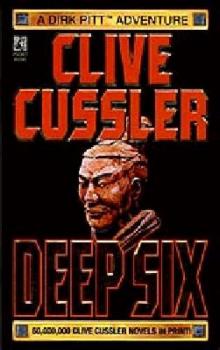 Deep Six
Deep Six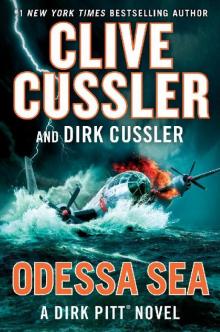 Odessa Sea
Odessa Sea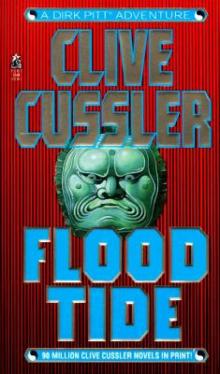 Flood Tide
Flood Tide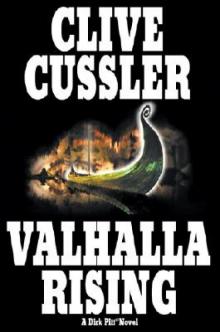 Valhalla Rising
Valhalla Rising Thriller 2
Thriller 2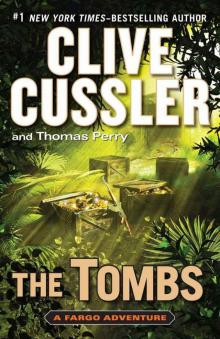 The Tombs
The Tombs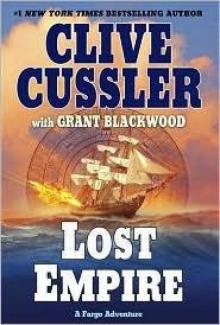 Lost Empire
Lost Empire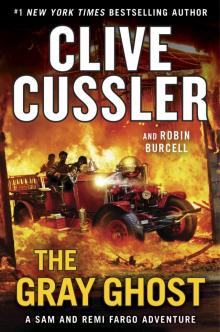 The Gray Ghost
The Gray Ghost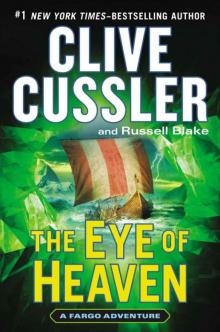 The Eye of Heaven
The Eye of Heaven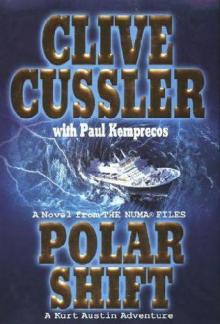 Polar Shift
Polar Shift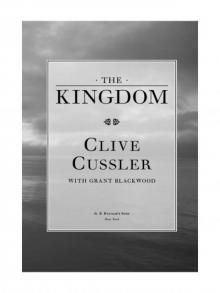 The Kingdom
The Kingdom Trojan Odyssey
Trojan Odyssey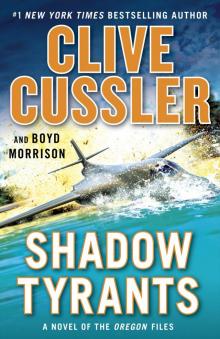 Shadow Tyrants
Shadow Tyrants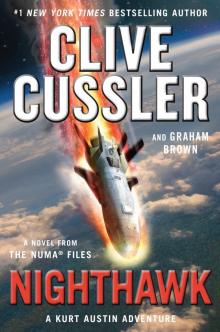 Nighthawk
Nighthawk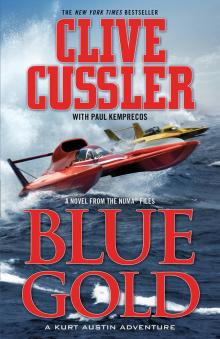 Blue Gold
Blue Gold Serpent
Serpent Lost City
Lost City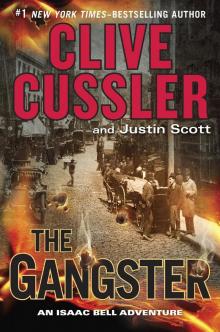 The Gangster
The Gangster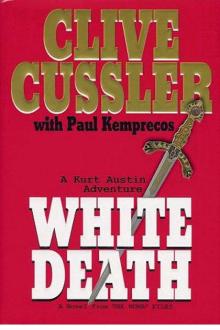 White Death
White Death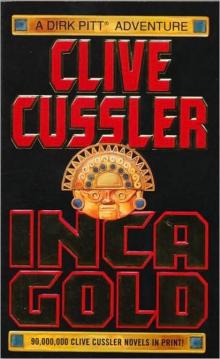 Inca Gold
Inca Gold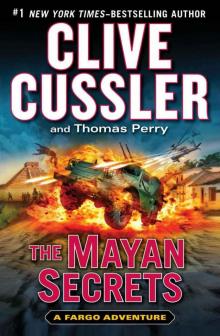 The Mayan Secrets
The Mayan Secrets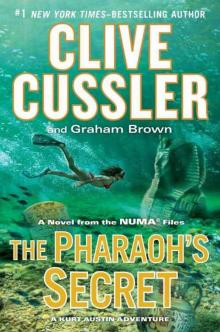 The Pharaoh's Secret
The Pharaoh's Secret The Emperor's Revenge
The Emperor's Revenge Corsair
Corsair Sacred Stone
Sacred Stone The Silent Sea
The Silent Sea The Rising Sea
The Rising Sea Black Wind
Black Wind Fast Ice
Fast Ice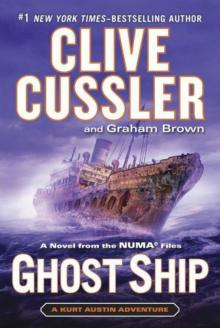 Ghost Ship
Ghost Ship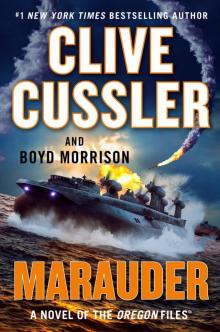 Marauder
Marauder The Thief
The Thief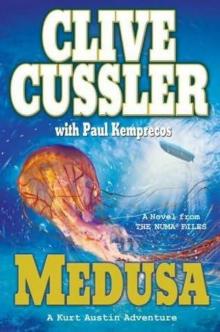 Medusa
Medusa Typhoon Fury
Typhoon Fury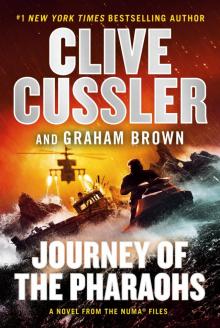 Journey of the Pharaohs
Journey of the Pharaohs The Navigator
The Navigator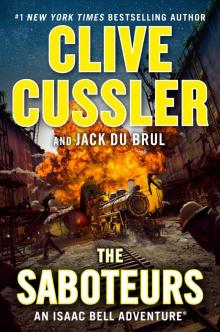 The Saboteurs
The Saboteurs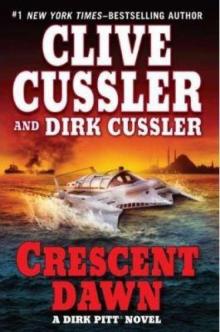 Crescent Dawn
Crescent Dawn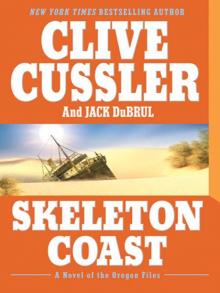 Skeleton Coast
Skeleton Coast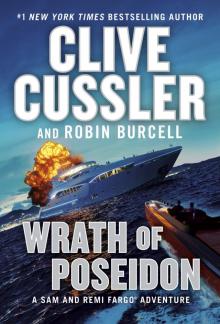 Wrath of Poseidon
Wrath of Poseidon The Mediterranean Caper
The Mediterranean Caper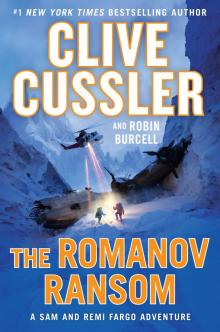 The Romanov Ransom
The Romanov Ransom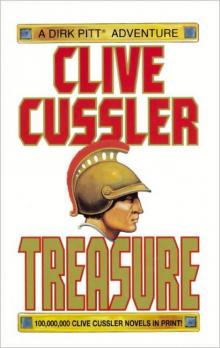 Treasure
Treasure The Race
The Race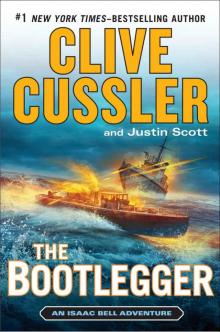 The Bootlegger
The Bootlegger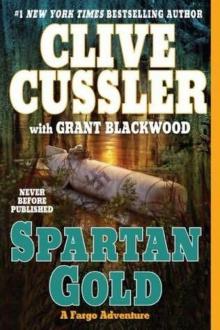 Spartan Gold
Spartan Gold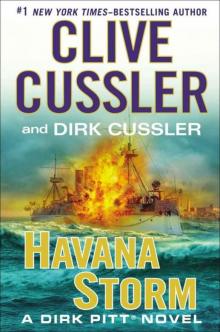 Havana Storm
Havana Storm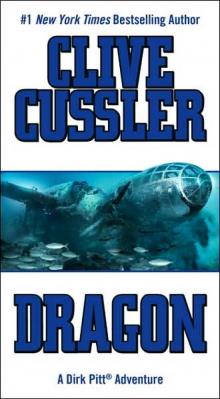 Dragon
Dragon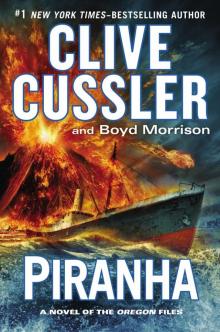 Piranha
Piranha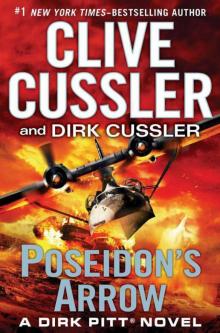 Poseidon's Arrow
Poseidon's Arrow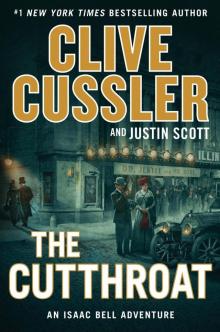 The Cutthroat
The Cutthroat Atlantis Found
Atlantis Found The Jungle
The Jungle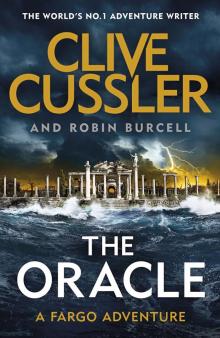 The Oracle
The Oracle Treasure / Dragon / Sahara: Clive Cussler Gift Set
Treasure / Dragon / Sahara: Clive Cussler Gift Set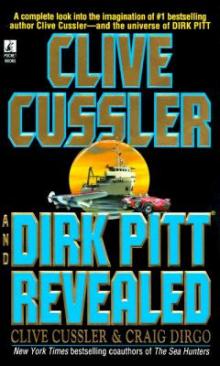 Clive Cussler and Dirk Pitt Revealed
Clive Cussler and Dirk Pitt Revealed The Sea Hunters
The Sea Hunters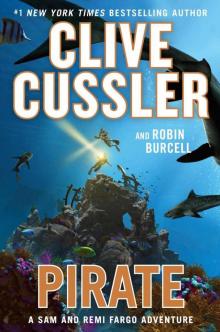 Pirate
Pirate The Striker
The Striker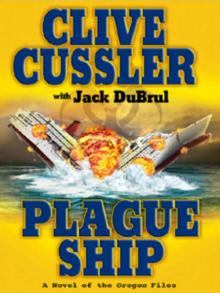 Plague Ship
Plague Ship The Wrecker
The Wrecker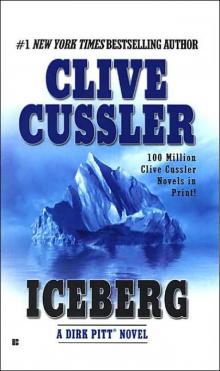 Iceberg
Iceberg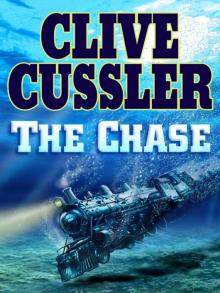 The Chase
The Chase The Spy
The Spy Golden Buddha
Golden Buddha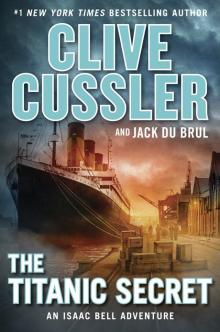 The Titanic Secret
The Titanic Secret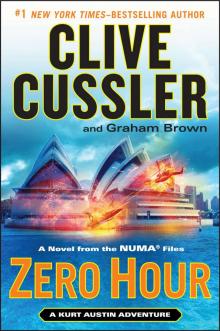 Zero Hour
Zero Hour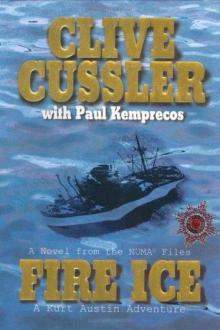 Fire Ice
Fire Ice Dark Watch
Dark Watch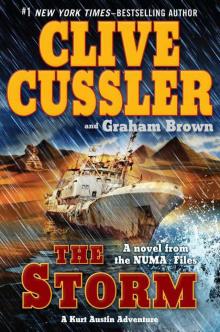 The Storm
The Storm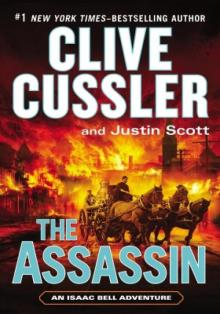 The Assassin
The Assassin Vixen 03
Vixen 03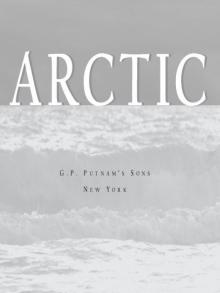 Arctic Drift
Arctic Drift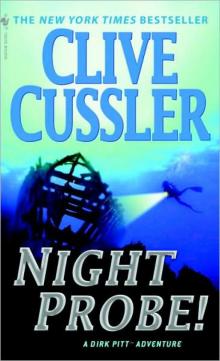 Night Probe!
Night Probe! Cyclops
Cyclops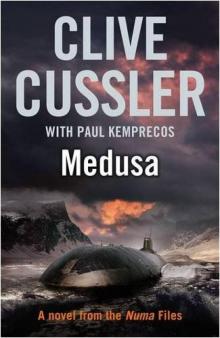 Medusa nf-8
Medusa nf-8 Shock Wave dp-13
Shock Wave dp-13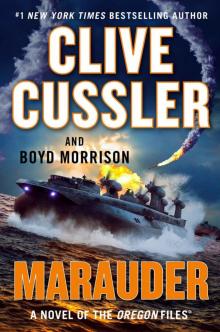 Marauder (The Oregon Files)
Marauder (The Oregon Files)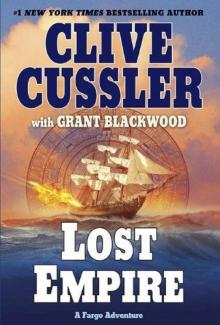 Lost Empire fa-2
Lost Empire fa-2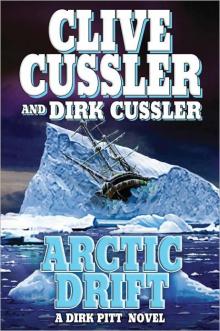 Arctic Drift dp-20
Arctic Drift dp-20 Dirk Pitt 22 - Poseidon's Arrow
Dirk Pitt 22 - Poseidon's Arrow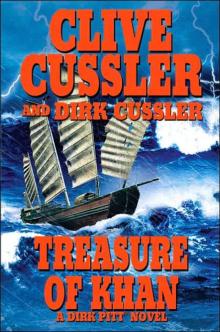 Treasure of Khan dp-19
Treasure of Khan dp-19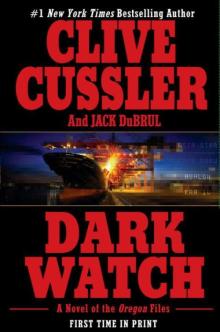 Dark Watch of-3
Dark Watch of-3 Devil's Gate
Devil's Gate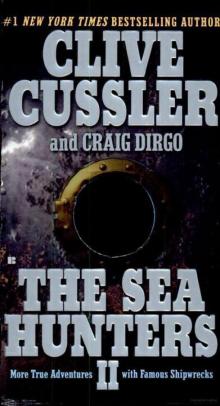 The Sea Hunters II: More True Adventures with Famous Shipwrecks
The Sea Hunters II: More True Adventures with Famous Shipwrecks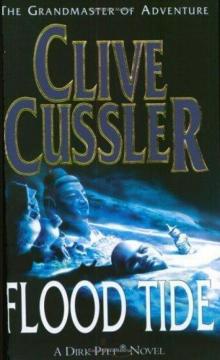 Flood Tide dp-14
Flood Tide dp-14 The Mediterranean Caper dp-2
The Mediterranean Caper dp-2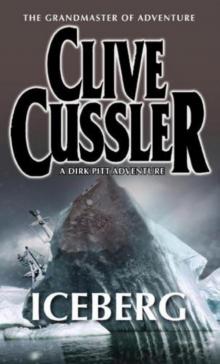 Iceberg dp-3
Iceberg dp-3 Sahara dpa-11
Sahara dpa-11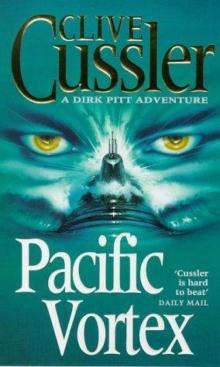 Pacific Vortex! dp-1
Pacific Vortex! dp-1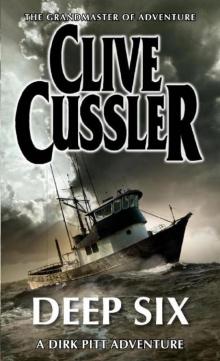 Deep Six dp-7
Deep Six dp-7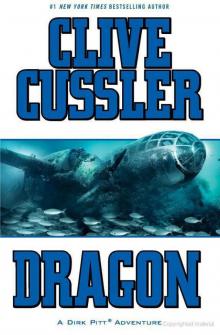 Dragon dp-10
Dragon dp-10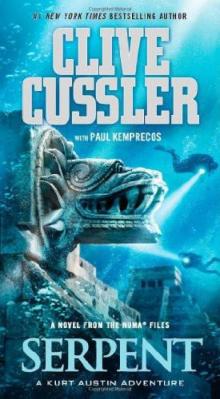 Serpent nf-1
Serpent nf-1 Havana Storm (Dirk Pitt Adventure)
Havana Storm (Dirk Pitt Adventure) Zero Hour nf-11
Zero Hour nf-11 The Storm nf-10
The Storm nf-10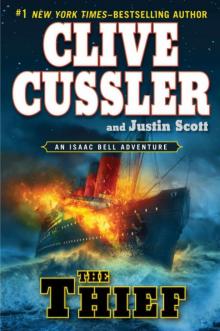 The Thief ib-5
The Thief ib-5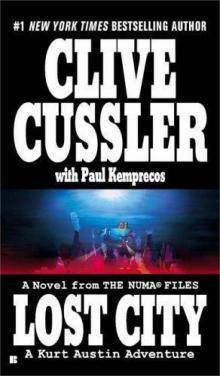 Lost City nf-5
Lost City nf-5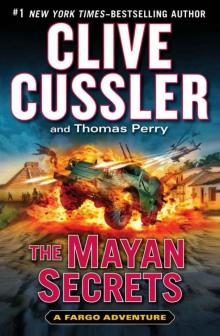 The Mayan Secrets fa-5
The Mayan Secrets fa-5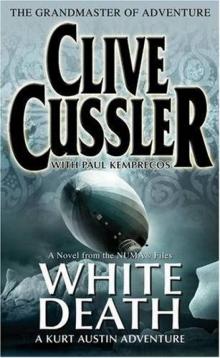 White Death nf-4
White Death nf-4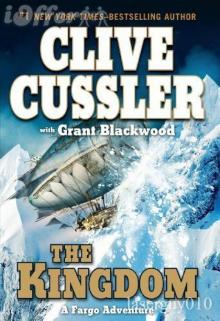 The Kingdom fa-3
The Kingdom fa-3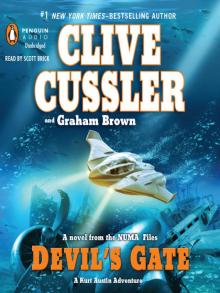 Devil's Gate nf-9
Devil's Gate nf-9 Poseidon's Arrow dp-22
Poseidon's Arrow dp-22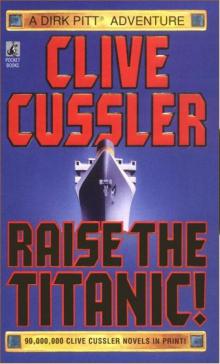 Raise the Titanic dp-4
Raise the Titanic dp-4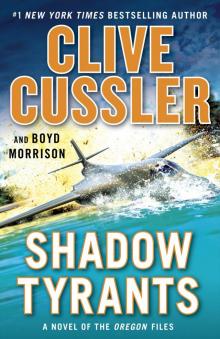 Shadow Tyrants--Clive Cussler
Shadow Tyrants--Clive Cussler Sacred Stone of-2
Sacred Stone of-2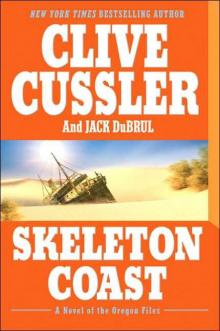 Skeleton Coast tof-4
Skeleton Coast tof-4 Mirage tof-9
Mirage tof-9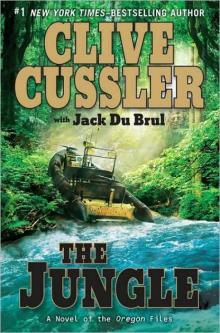 The Jungle of-8
The Jungle of-8 The Emperor's Revenge (The Oregon Files)
The Emperor's Revenge (The Oregon Files)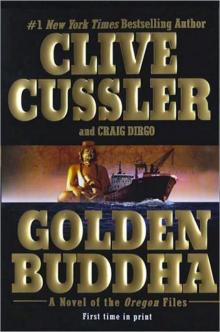 Golden Buddha of-1
Golden Buddha of-1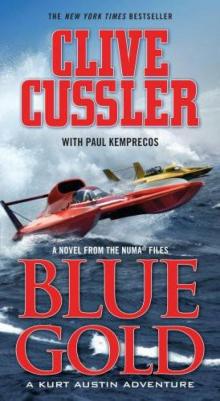 Blue & Gold
Blue & Gold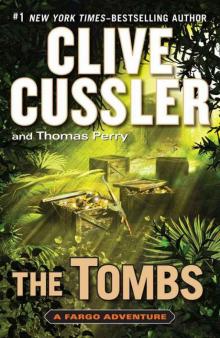 The Tombs fa-4
The Tombs fa-4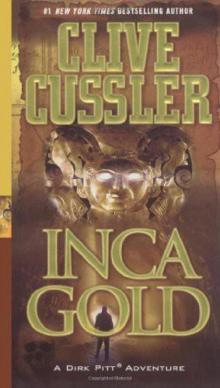 Inca Gold dp-12
Inca Gold dp-12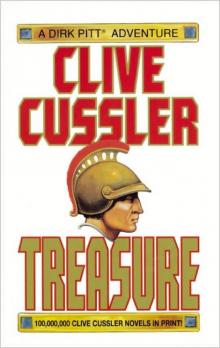 Treasure dp-9
Treasure dp-9 Atlantis Found dp-15
Atlantis Found dp-15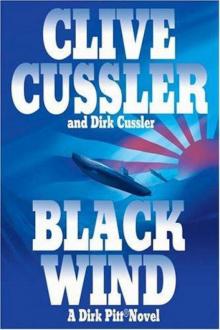 Black Wind dp-18
Black Wind dp-18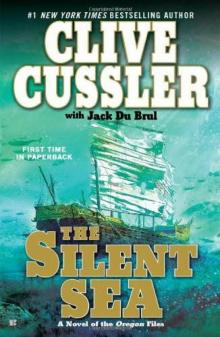 the Silent Sea (2010) tof-7
the Silent Sea (2010) tof-7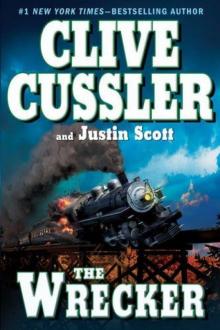 The Wrecker ib-2
The Wrecker ib-2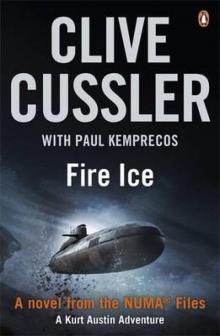 Fire Ice nf-3
Fire Ice nf-3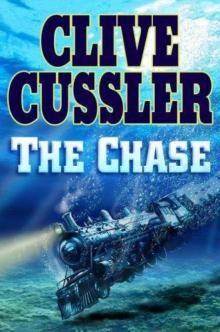 The Chase ib-1
The Chase ib-1 Sahara
Sahara The Striker ib-6
The Striker ib-6 Polar Shift nf-6
Polar Shift nf-6 The Race ib-4
The Race ib-4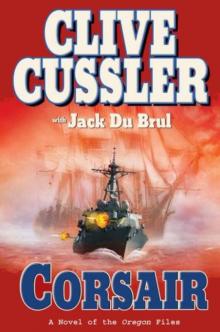 Corsair of-6
Corsair of-6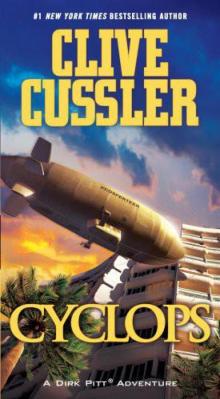 Cyclops dp-8
Cyclops dp-8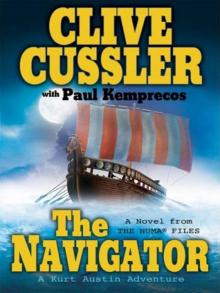 The Navigator nf-7
The Navigator nf-7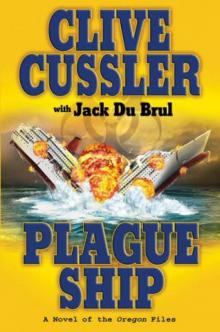 Plague Ship tof-5
Plague Ship tof-5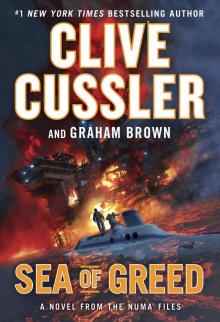 Sea of Greed
Sea of Greed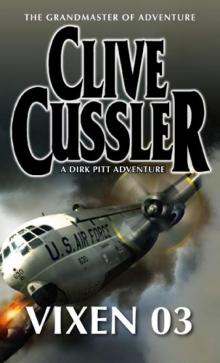 Vixen 03 dp-5
Vixen 03 dp-5 Thriller 2: Stories You Just Can't Put Down
Thriller 2: Stories You Just Can't Put Down